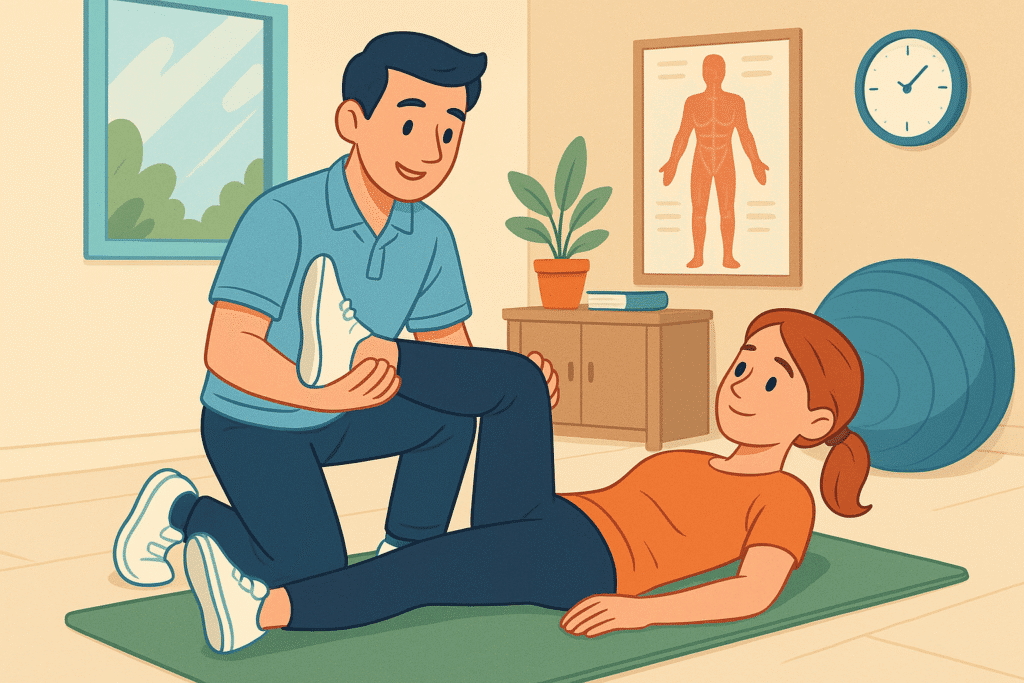

When someone suffers a physical injury —such as a sprain, fracture, sports injury, or orthopedic surgery— they often hear recommendations to “go to physical therapy” or “start a physical rehabilitation program.” While the terms are sometimes used interchangeably, they are not exactly the same. This article explains what each one is, how they complement each other, and when it’s best to seek physical therapy or physical rehabilitation.
What is Physical Therapy?
Physical therapy is a healthcare discipline focused on restoring movement, reducing pain, and improving muscle and joint function. Physical therapists use techniques such as:
- Therapeutic exercises
- Massage therapy and stretching
- Electrotherapy and ultrasound
- Heat and cold therapy
It is commonly prescribed for musculoskeletal injuries like sprains, muscle contractures, post-fracture recovery, back pain, and recovery after orthopedic surgeries.
What is Physical Rehabilitation?
Physical rehabilitation is a broader concept that includes physical therapy but also other medical and therapeutic strategies. Its goal is to help the patient regain maximum independence and functionality after a severe injury, accident, or condition that limits mobility.
This process often involves not only physical therapists, but also rehabilitation physicians, occupational therapists, and other specialists. It is recommended in cases such as:
- Spinal cord or severe back injuries
- Stroke recovery (neurological rehabilitation)
- Amputations and prosthesis adaptation
- Major accidents or polytrauma
Similarities Between Physical Therapy and Physical Rehabilitation
- Both aim to improve the patient’s quality of life.
- Both rely on therapeutic exercises and specialized techniques to restore movement and strength.
- Both are essential in post-injury and post-surgery recovery.
- Physical therapy is often an essential part of the broader rehabilitation process.
Key Differences
- Physical therapy focuses specifically on muscles, joints, and movement recovery.
- Physical rehabilitation is a comprehensive program that includes physical therapy but also addresses patient adaptation to new conditions, use of prosthetics, and reintegration into daily life.
When to Seek Physical Therapy vs. Physical Rehabilitation
- Physical therapy: best for sports injuries, muscle pain, contractures, post-surgical recovery of the knee, shoulder, or spine, or non-disabling mobility problems.
- Physical rehabilitation: indicated after severe accidents, spinal cord injuries, strokes, amputations, or when the patient needs specialized support to regain independence.
Practical Tips
- Don’t ignore persistent pain: early physical therapy can prevent complications.
- If the injury affects your independence (walking, dressing, or working), a full rehabilitation program is likely the best choice.
- Always consult a specialist: a rehabilitation physician can determine whether you need physical therapy, physical rehabilitation, or both.
Conclusion
Physical therapy and physical rehabilitation are not competing treatments —they are complementary approaches. Physical therapy focuses on restoring strength, mobility, and reducing pain, while physical rehabilitation ensures a more comprehensive recovery that allows the patient to return to daily life with greater independence.
At Doctor At Home Mexico, we work with specialists in both areas. Soon, you’ll also find specific articles by city, such as physical therapy and rehabilitation in Mexico City, so you can access the right care near you.
